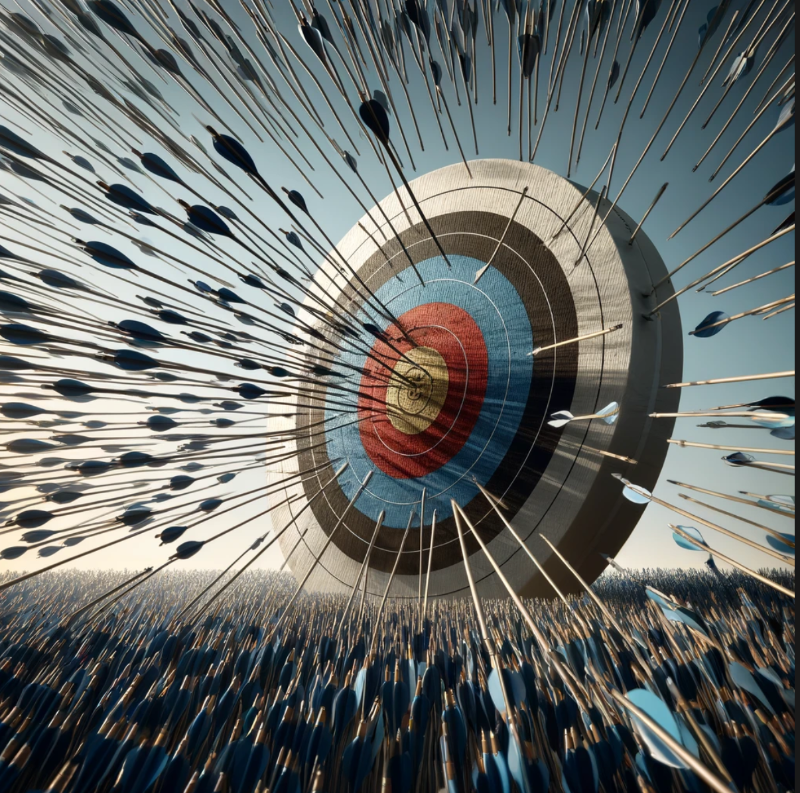Cognitive activator - Shooting Arrows A&A

| Factual Questions: | Conceptual Questions: | Debatable Questions: |
| What method is used to estimate the value of pi in this activity? | Why is a quarter circle used in the estimation of pi in this simulation? | How would changing the simulation conditions, like target size, affect the ethical implications of using this estimation method? |
| What is the estimated value of pi after 1000 arrows were shot? | How does the law of large numbers apply to the estimation of pi in this simulation? | Could the archery simulation method for estimating pi be considered reliable compared to traditional geometric methods? |
| How does the ratio of arrows hitting the target to those missing help in calculating pi? | What statistical concepts underlie the Monte Carlo method used in this simulation? | What implications might the accuracy of this pi estimation method have for mathematical education and research? |
Shooting arrows
Scenario: The Archery Analytics Adventure
Background:
The kingdom of Numeria is hosting its annual Archery Analytics Adventure, a contest where archers and mathematicians team up. The goal is to estimate the value of pi using a method based on shooting arrows at a target.
Objective:
As a mathemagician and aspiring archer, your task is to use the cognitive activator applet to simulate shooting arrows at a target and use the results to estimate pi.
Investigation Steps:
1. Simulating the Shots:
- Use the applet to simulate shooting 100 and then 1000 arrows at a target.
- Record the number of arrows that hit the target and those that miss.
2. Understanding the Math:
- Recognize that the target represents a quarter circle within a square.
- Relate the proportion of arrows on target to the area of the quarter circle and the total area of the square.
3. Estimating Pi:
- Use the ratio of arrows on target to the total number of arrows to estimate the value of pi.
- Discuss how increasing the number of arrows affects the accuracy of the estimation.
4. Sharing Your Findings:
- Present your method and findings to the other contestants.
- Explain the statistical concept of Monte Carlo simulation as it applies to this activity.
Questions for Investigation:
1. Discovery Question:
- How does the law of large numbers apply to this archery-based estimation of pi?
2. Experiment Variation:
- What would happen if the target's size was doubled or the distance from which you shoot was increased?
3. Analyzing Patterns:
- Can you identify any patterns in the distribution of arrows that might affect the accuracy of your estimation?
4. Reflection:
- Why is it important to have a good estimation of pi, and how does this
